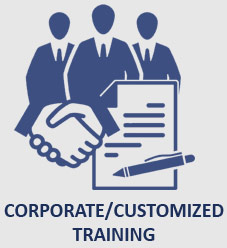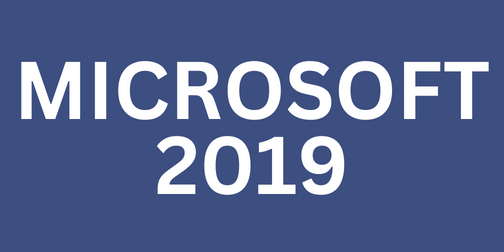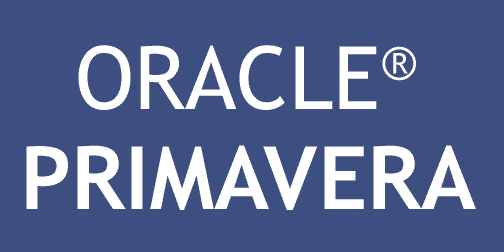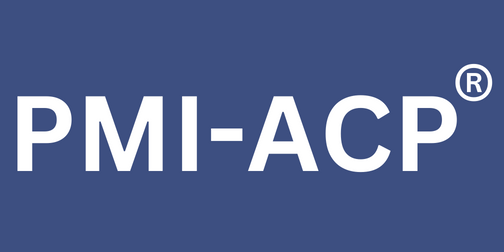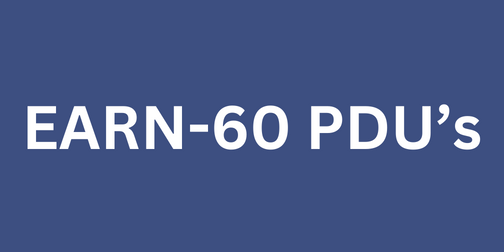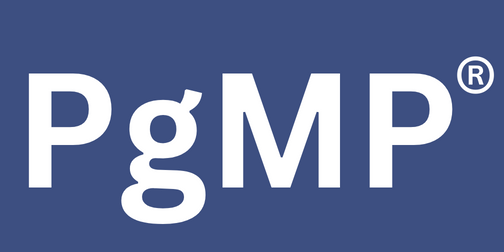Selenium Training
Selenium is an open-source umbrella project for a range of tools and libraries aimed at supporting web browser automation. Selenium provides a playback tool for authoring functional tests without the need to learn a test scripting language (Selenium IDE). It also provides a test domain-specific language (Selenese) to write tests in a number of popular programming languages, including JavaScript (Node.js), C#, Groovy, Java, Perl, PHP, Python, Ruby and Scala. The tests can then run against most modern web browsers. Selenium runs on Windows, Linux, and macOS. It is open-source software released under the Apache License 2.0.
Program Outline
PROGRAM OUTLINE:
- Selenium Introduction
- Course outcome
- Syllabus walkthrough
- What is Automation Testing?
- Why we need Automation? & how to learn any automation tool?
- Different types of automation approaches.
- What is Selenium? & why WebDriver?
- Selenium Overview Brief history of Selenium
- Features of Selenium
- Advantages and limitations of Selenium
- Selenium Components
- Introduction to Selenium IDE
- Introduction to Selenium RC
- Introduction to Selenium WebDriver
- Introduction to Selenium Grids
- Selenium Architectures
- Setup and Installation
- Java Overview and setup
- Download and Installing Java
- IDE configuration Eclipse and IntelliJ
- Creation of first selenium project
- Run first test in selenium
- Run test on different browsers
- Basic Java
- Write a simple Java program
- Compile and Execute your Java program – Importance of JVM
- Variables and Data Types
- Classes, Objects and methods
- Java operators
- Constructors & Packages
- IF and Else Statements
- Switch Case statement
- Loops - While Loop, Do while loop, for loop, nested loops
- Break and Continue statements
- Packages and Access Modifiers
- String
- Java OOPS Concept
- OOPs Introduction - Encapsulation
- Setter and Getter methods
- Polymorphism
- Polymorphism - Overloading
- Polymorphism - Overriding
- Polymorphism - Overriding benefits and drawbacks
- Inheritance
- Abstraction
- Java Advance Concept
- Constructors and This Keyword
- Super Keyword
- Abstract Class
- Interface
- Difference between Abstract Class and Interface
- Exception Handling in Java
- Checked Exception
- Unchecked Exception
- Error
- Java Collections Part 1
- Collection – Overview
- Collection – Array
- Collection – ArrayList
- Collection – LinkedLists
- Java Collections Part 2
- Collection - HashSet
- Collection – HashMap
- Collection – HashTable
- Java I/O Operations
- Reading Properties files
- Reading and Writing text
- Reading and Writing Excel Sheet
- Element Locator Techniques and Tools to identify Objects
- Significance of locators in selenium
- Identify elements with ID, Name, ClassName, TagName, Linktext
- Understanding of DOM
- Identify elements with Xpath
- Identify elements with CSS path
- Generating customize xpath and CSS path
- Different Browser plugin to locate the element
- Overview of Selectorhub and use
- Launching Different Browser & Navigation Commands
- Launching IE
- IE driver server and path settings
- Launching Chrome
- Chrome server and path settings
- Launching Firefox
- Firefox server and path settings
- How to Open a URL
- Verify Page title
- Strategy to get the Page Source
- Difference between Close & Quit
- Ways to Navigate Back & Forward
- How to Refresh Page
- Another way of Navigating to specific Page
- WebDriver Manager
- Handling Input Text Box and Buttons
- Handle Dropdown, Tables, Checkboxes & Radio buttons
- Handling Input Text Box and Buttons
- Handling Checkboxes, Radio Buttons and Links
- How to scroll down and scroll up
- Identify table rows and columns
- Extracting values from a cell
- Dynamically Identify Tables Data
- Select class in Selenium
- Drop Down Handle
- Select multiple values from the list
- Select & Deselect operations by Index, Value & Visible Text
- Handling Combo Boxes
- Handling Drag and Drop Elements
- Selenium Waits, Alert, iFrame & Switch Windows
- Implicit and Explicit waits
- How to use Expected Conditions with Waits
- PageLoadTimeout & SetScriptTimeout property
- Simple use of Thread Sleep
- Concept of Fluent Wait in Selenium
- Strategy to poll for an objectss
- WebDriverWait and its uses
- Different WaitUntil Conditions
- Ways to handle Simple, Confirmation & Prompt Alert
- Difference between Window Handle & Handles
- Switching & Closing Windows, Tabs & PopUps
- Concept of window ID
- Extracting window IDs with Selenium Object reference
- Handling iFrame
- Handling Calendars
- Action Class, Robot Class, Browser Profile, File Upload and Java Script Executer
- What is Action Class & What can we do with Action Class
- Mouse Hover & Mouse Movement with Action
- Finding Coordinates of a Web Object
- What is Robot Class & What can we do with Robot Class
- What is Java Script Executer?
- Importance and uses of java script executer
- What is Browser Profile
- How to set up FireFox profile
- How to set up IE profile
- HTTP user authentication in Mozilla
- HTTP user authentication in IE
- Certificate handle in Mozilla
- Certificate handle in IE
- TestNG Framework
- TestNG Introduction
- Install TestNG
- TestNG Annotation(TestNG Test,TestNG Test Suite, TestNG Annotations, TestNG Groups, TestNG Dependent Tests, TestNG Reports, TestNG Parameters, TestNG Data-Providers, TestNG Test Priority)
- TestNG Reporter Log
- TestNG Asserts
- TestNG Cross Browser Testing
- TestNG Data Provider with Excel
- TestNG Parallel Execution
- TestNG Listeners
- Retry Failed Tests in TestNG
- Implement IRetryAnalyzer to Retry Failed Test in TestNG Framework
- TestNG Vs Junit
- TestNG Interview Questions
- Logging and Build Tool Maven
- Introduction to Log4J
- Log4j Logging and its advance Usage
- Maven Introduction
- Install Maven in Eclipse IDE
- Install Maven on Windows
- Install Maven on Mac
- How to Create a New Maven Project
- How to Create a New Maven Project in Eclipse
- Configure Selenium Continuous Integration with Maven
- Reporting
- TestNG Basic Report
- Advance Extent Report
- Allure Reports
- GIT and Jenkins
- Introduction to GIT
- Basic Commands
- Project Configuration
- Jenkins Integration
- Jenkins Introduction
- Selenium Integration with Jenkins
- Framework Introduction
- What is Automation Framework
- Features of Automation Framework
- Benefits of using Automation Framework
- Different types of Automation Framework
- What is Data Driven Framework
- What is Modular Driven Framework
- What is Keyword Driven Framework
- What is Hybrid Frameworks
- Project-1 Live Demo Session Part 1
- Page Object Model + Page factory
- Data Driven
- Project-1 Live Demo Session Part 2
- Add TestNG
- Add Maven
- GIT
- Jenkins
- Project-2 Live Demo Session
- Hybrid Framework
- TestNG + Maven + GIT + Jenkins
- Interview Preparation
- Selenium Interview Questions
- TestNG Interview Questions
- Maven, GIT and Jenkins Interview Questions
- Java Interview Questions
- Framework Interview Questions
- Open source/ Free tool
- No OS/ browser demands
- Support for multiple programming languages
- Availability of Frameworks
- Strong presence in the DevOps lifecycle
- Easy integration with other tools
- Parallel & distributed testing
- No dependency on GUI based systems
- Flexibility while designing test cases
- Demand for Selenium testers
- Create a WebDriver session.
- Navigate to a Web page.
- Locate an HTML element on the Web page.
- Perform an action on the located element.
- Assert the performed action did the correct thing.
- Report the result of the assertion.
- End the session.
- Freshers/Professionals looking opportunity in Software testing
- Manual testers who are looking to explore different areas in Software Testing like Database Testing/API Testing & Backend Testing
- BA/ Support or Other IT Professionals looking to start career as Software Tester
 Advantage of Selenium Training
Advantage of Selenium Training
 How can Perform Selenium Testing
How can Perform Selenium Testing
 What can we do for you?
What can we do for you?
>











